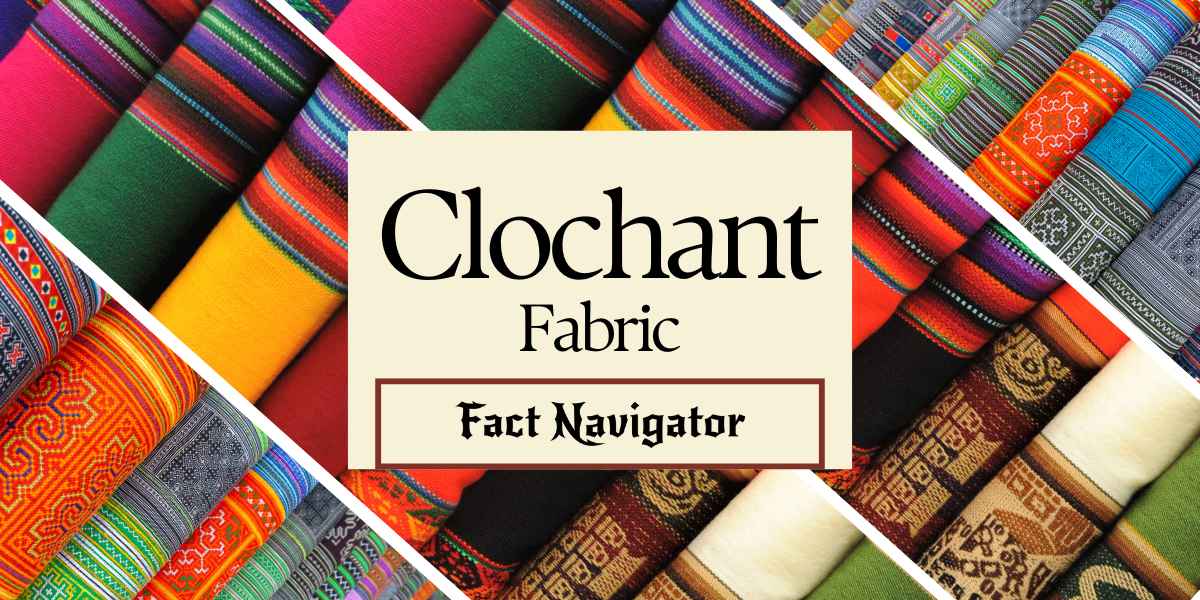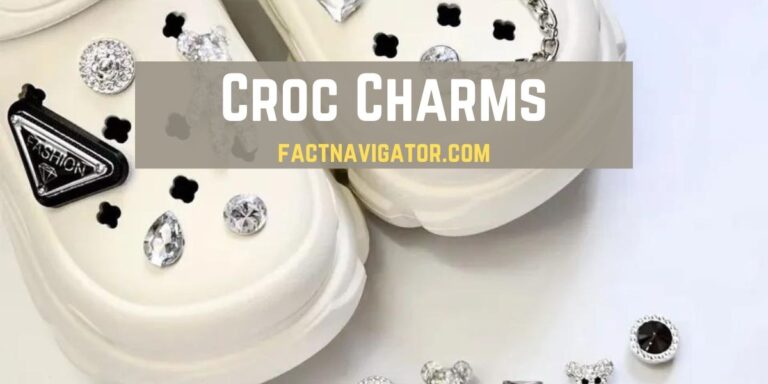Clochant Fabric: History, Uses, Care – Expert Guide

The world of textiles is a vast and ever-changing landscape of colors, textures, and techniques. Among its most captivating treasures rests clochant, a fabric as visually striking as it is historically rich. Imagine the extravagant salons of Versailles, where clochant draped elegantly across the figures of courtiers and royalty – Marie Antoinette herself was a noted admirer of its luxurious hand. Or perhaps envision the swirling, vibrant costumes of the Ballets Russes, where clochant transformed dancers into otherworldly creatures of unparalleled opulence.
Clochant (from the French ‘cloche’ meaning ‘bell’) is a fabric defined by its distinctive raised, blistered texture, reminiscent of tiny bells. This effect is achieved through a complex weaving process that combines threads of differing tensions, creating a captivating tactile and visual experience.
In this blog post, we’ll embark on a journey through the annals of clochant. We’ll uncover its fascinating history, its unique characteristics, diverse applications, and practical tips for care. Whether you’re a fashion aficionado, a textile enthusiast, or simply adore the beauty of luxurious fabrics, this guide will reveal the wonders of clochant and leave you eager to experience its allure firsthand.
1. History of Clochant Fabric
Clochant’s roots stretch back to the opulent courts of 18th century France, where luxury and extravagance reigned supreme. Skilled weavers in Lyon, a textile hub renowned for its craftsmanship, are believed to have developed the earliest forms of clochant during this period. Its unique, textured quality quickly captured the attention of the aristocracy, including the iconic (and some might say extravagant) Marie Antoinette.
While clochant initially found popularity within the highest echelons of society, the 19th century saw increased accessibility to the fabric. This was due in part to improvements in weaving technology, although production remained complex and labor-intensive. The rise of the middle class also fueled demand, with clochant becoming a prized fabric used for special occasion garments, particularly women’s outerwear like capes and coats.
Clochant’s star rose once again in the early 20th century, thanks largely to its adoption by the legendary Ballets Russes. Celebrated costume designers like Léon Bakst incorporated clochant into the company’s revolutionary stagewear, its rich texture and light-catching ability adding a sense of extravagance and movement to their performances. The avant-garde fashion scene of the Roaring Twenties also embraced clochant, leading to its use in both evening wear and more experimental designs.
Throughout history, clochant has held more than aesthetic value. Its association with luxury made it a symbol of status and wealth. In some cultures, it was incorporated into bridal attire, symbolizing abundance and good fortune. While primarily a Western fabric historically, there’s evidence of clochant-like techniques appearing in Japanese textiles dating back to the 17th century. This suggests a broader fascination with the intricate textural possibilities clochant offers.
2. The Unique Characteristics of Clochant Fabric
The Allure of Texture
The defining feature of clochant is its signature raised, blistered surface. This texture is similar to seersucker or crepe, but with a more pronounced and often irregularly shaped “bell-like” pattern. This three-dimensionality makes clochant incredibly tactile and visually captivating, adding depth and complexity to any design.
Composition and Construction
Clochant was traditionally made from silk, lending it a luxurious drape and sheen. Modern interpretations may also incorporate wool, cotton, or synthetic fibers. The key to creating clochant’s texture lies in its unique weaving technique. Here’s how it works:
- Threads Under Tension: Clochant uses two sets of warp (vertical) threads held at different tensions in the loom. One set is taut while the other is significantly looser.
- The Weave and Release: As the weft (horizontal) threads are woven through, the tighter warp threads pull the looser ones, creating puckers and raised areas. When the fabric is removed from the loom and treated with heat or moisture, the looser threads relax even further, accentuating the textured effect.
3. Advantages and Disadvantages of Clochant
Advantages
- Stunning Aesthetic: Clochant’s texture creates visual interest and elegance.
- Luxurious Feel: Versions made from silk or wool often have a soft, luxurious hand.
- Good Drape: Clochant often drapes beautifully, especially silk versions.
Disadvantages
- Requires Special Care: Cleaning and ironing clochant can be tricky due to its texture.
- Prone to Snagging: The raised surface can be vulnerable to snags or pulls.
- Limited Versatility: Clochant’s distinctive texture makes it better suited for certain garments or home decor items over others.
4. Applications of Clochant Fabric
Clochant in Fashion: A Legacy of Elegance
The Belle Époque and Beyond: During the late 19th and early 20th centuries, clochant was a go-to fabric for elegant evening gowns, day dresses, and luxurious coats. Its textured surface added a touch of opulence, perfect for social events and occasions.
Roaring Twenties Glamour: Think of the iconic flapper dresses – while not always made from clochant, the fabric’s free-flowing movement and luxurious feel would have perfectly fit the era’s aesthetic.
Theatrical Flair: Clochant’s dramatic qualities make it a natural fit for stage costumes. The Ballets Russes, as we’ve discussed, showcased clochant’s versatility, and its use continues in theatrical productions seeking a touch of extravagance.
Clochant in Home Decor: Luxury and Visual Interest
Tactile Touches: The raised texture of clochant makes it a stunning choice for accent pillows, throws, and bedding. It adds depth and a unique tactile element to any space.
Opulent Upholstery: While not the most practical for heavily used furniture, clochant makes eye-catching statement upholstery for occasional chairs, chaise lounges, or decorative pieces.
Window Treatments with Flair: Clochant can be used for luxurious curtains or drapes, though its opacity and light-filtering qualities need careful consideration.
Modern Applications: Rediscovering a Classic
High Fashion Revival: While not a staple fabric, clochant occasionally resurfaces in high-fashion collections. Designers like Alexander McQueen and Vivienne Westwood have incorporated it, playing with its extravagance and historical connections.
Niche Enthusiasts: Clochant is also finding a home within smaller communities who appreciate vintage fabrics, historical fashion, and DIY sewing projects. This ensures its legacy lives on even if it’s not mass-market popular.
Beyond Fashion and Decor: The texture of clochant could have interesting potential for accessories like handbags, belts, or even jewelry components, showcasing innovation in its use.
Important Note: When considering clochant’s applications, it’s vital to remember its delicacy and the care it requires. This makes it a special-purpose fabric, not a go-to for everyday wear or heavily used home items.
5. Caring for Clochant Fabric
Clochant’s unique texture demands gentle care to maintain its beauty and longevity. Here’s what you need to know:
Cleaning: Your Best Options
- Dry Cleaning Preferred: The safest option for clochant is professional dry cleaning. Cleaners have the expertise to handle delicate fabrics and minimize the risk of damage to the raised texture.
- Handwashing: A Cautious Alternative: If you opt for handwashing, be incredibly gentle. Use a mild detergent specifically formulated for delicate fabrics in cool water. Avoid wringing or twisting the fabric. Gently agitate and squeeze out excess water instead.
Drying: Air is Best
- No to the Dryer: The heat and tumbling action of a dryer can be disastrous for clochant. Lay your item flat on a clean towel to air dry. Avoid hanging, as this can potentially stretch the fabric and distort the texture.
Ironing: Handle with Extreme Care
- Low Heat is Key: If absolutely necessary, you can iron clochant on the lowest possible heat setting.
- Protect the Texture: Always iron on the wrong side (inside) of the fabric. Place a press cloth between the iron and the fabric to prevent crushing the raised areas. Test on an inconspicuous area first.
- Steaming as an Alternative: Steaming can be a safer option to gently remove wrinkles without direct contact with the iron.
Storage: Protection is Paramount
- Avoid Tight Spaces: Don’t pack clochant items into overcrowded closets or drawers. This can crush the texture. If storing long-term, consider folding loosely and using acid-free tissue paper for extra protection.
- Light and Moth Protection: Store clochant away from direct sunlight, which can fade colors over time. If storing natural fiber clochant (silk or wool), use mothballs or cedar blocks to deter pests.
Special Considerations
- Always Consult the Care Label: If your clochant item has a care label, follow those instructions first, as the specific fiber content may influence the best cleaning method.
- Professional Help for Stains: If confronted with a stain, resist the urge to DIY. Take your clochant item to a dry cleaner for professional treatment to avoid accidental damage.
By following these guidelines and treating your clochant with extra care, you can ensure its unique beauty and elegance last for years to come!
Conclusion
Clochant fabric, with its captivating textured surface, offers a unique blend of history, luxury, and tactile artistry. From the opulent fashions of centuries past to its presence in modern design, clochant continues to be a textile that evokes a sense of wonder and extravagance.
While its care requires a delicate touch, the rewards of clochant’s visual appeal and unique drape make it a worthwhile treasure for both fashion and home decor enthusiasts. Its distinctive raised pattern adds undeniable character and a touch of the extraordinary to any creation.
If you’ve been captivated by the enchanting world of clochant, don’t be afraid to explore further! Seek out examples of clochant in museums or historical costume collections. Learn more about its influence on fashion throughout the ages. And if you’re feeling inspired, perhaps a luxurious clochant throw pillow or a vintage clochant garment awaits you, ready to add a touch of timeless elegance to your life.






